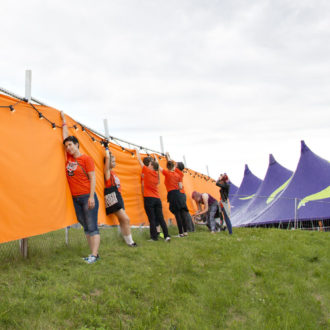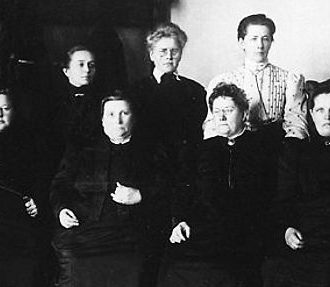Finland introduced citizens’ initiatives in 2012, and the first proposal reached Parliament a year later.
That first initiative, which called for the abolition of fur farming, was rejected, but others have become law. The citizens’ initiative that included marriage equality for same-sex couples became the first initiative to be granted approval and to result in legislative change. It still holds the record for number of signatures gathered: 166,851.
Citizens’ initiatives are in use in about 30 countries around the world. There are European citizens’ initiatives, which go to the European Commission, while other political entities, such as some US states, also have a process in place.
Get your voice heard

A debate progresses in Parliament in the Finnish capital as members of the public watch from the gallery.Photo: Markko Ulander/Lehtikuva
“I think the citizens’ initiative has been a huge success in many ways,” says Henrik Serup Christensen of Åbo Akademi, a Swedish-language university in southwestern Finland. He has published several academic papers about the initiative in Finland. “It has mobilised people and is the most popular form of democracy between elections. Young people in particular use it a lot.”
It is a common worry in many countries that young people are not engaging with the political process. Encouraging them to take part in democracy is important for a well-functioning society. One of Christensen’s studies discovered that 49 percent of millennials have supported at least one citizens’ initiative, compared to 28 percent of the general population.
In order to reach Parliament, an initiative needs 50,000 signatures, which is less than 1 percent of Finland’s population. Legislators then consider the proposal, but are under no obligation to pass it. In fact, the majority of initiatives don’t become law.
As of March 2023, 1,431 initiatives have been started, 64 have been sent to Parliament and five have become law. Two others received modifications before adoption. Although few initiatives make it through the process, studies have shown that citizens become more engaged in the political process, even if their ideas don’t enter the law books.
From taxes to legalisation

Thousands of people gathered across from Parliament on November 28, 2014, the day lawmakers voted on the bill including same-sex marriage rights.Photo: Vesa Moilanen/Lehtikuva
“People are willing to accept their initiative not being passed, but they get upset if they feel they are not being listened to,” Christensen says. “Politicians have to take these initiatives seriously and give them due consideration.”
Finns can use old-fashioned paper petitions to collect signatures, but there is also a secure online platform available. A strong verification method ensures the validity of digital signatures.
The initiatives cover a broad range of topics. Recent proposals include tax deductions for exercise expenses, increased staffing in daycares and legalisation of marijuana.
“An important point to remember is that citizens’ initiatives are sent to Parliament, and Parliament can only enact things that fall under its prerogative,” Christensen points out. “The Finnish Constitution says the President has a lot of responsibility in defence and foreign policy, for example.”
Lakes and forest cover about 80 percent of Finland, so many initiatives have to do with Finnish nature. Minna Mikkonen was one of the main organisers for a proposal to ban hunting traps.
“On social media I saw bears caught in traps,” she says. “I got so angry seeing their pain. These traps cause unnecessary suffering to animals.”
A way to take action

The Parliament House, designed by Johan Sigfrid Sirén and completed in 1931, overlooks Mannerheim Road and Citizens’ Square.Photo: Olivia Ranta/Lehtikuva
Mikkonen decided to channel her feelings into action. She could have lobbied politicians or organised protests and boycotts, but instead she chose the citizens’ initiative. Grassroots support quickly swelled as word spread.
“I got a lot of positive feedback from many animal rights organisations, like the Finnish Nature League and Animal Welfare Finland,” Mikkonen says. “I’m extremely grateful.”
They received 56,213 signatures for the proposal to ban hunting traps, of which all but 24 came through the official online platform. It has been sent to Parliament, and at the time of writing Mikkonen is waiting for them to consider it. There are no guarantees that it will pass, but she is still pleased with the process.
“Many politicians agreed with me, but there were a lot of people that didn’t,” she says. “But I’m happy that I made the citizens’ initiative.”
Successful citizens’ initiatives in Finland
- Equal marriage for same-sex couples
- Improved maternity rights for female same-sex couples
- Banning female genital mutilation
- Preventing privatisation of water supplies
- Updating abortion law to strengthen the self-determination rights of pregnant people
- Ensuring better availability of education in the field of psychotherapy
- Management of the wolf population
By David J. Cord, March 2023










